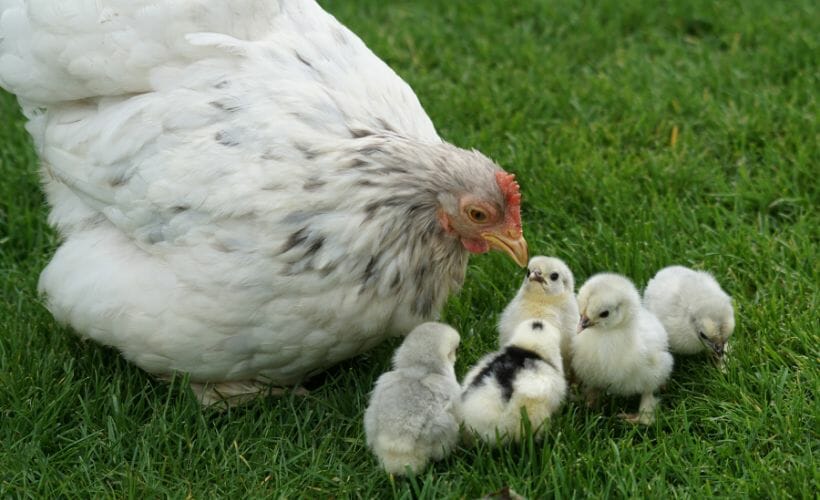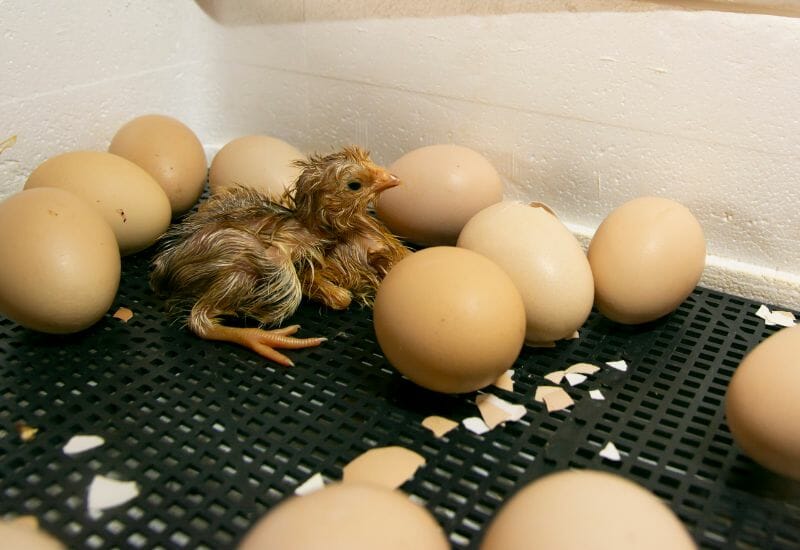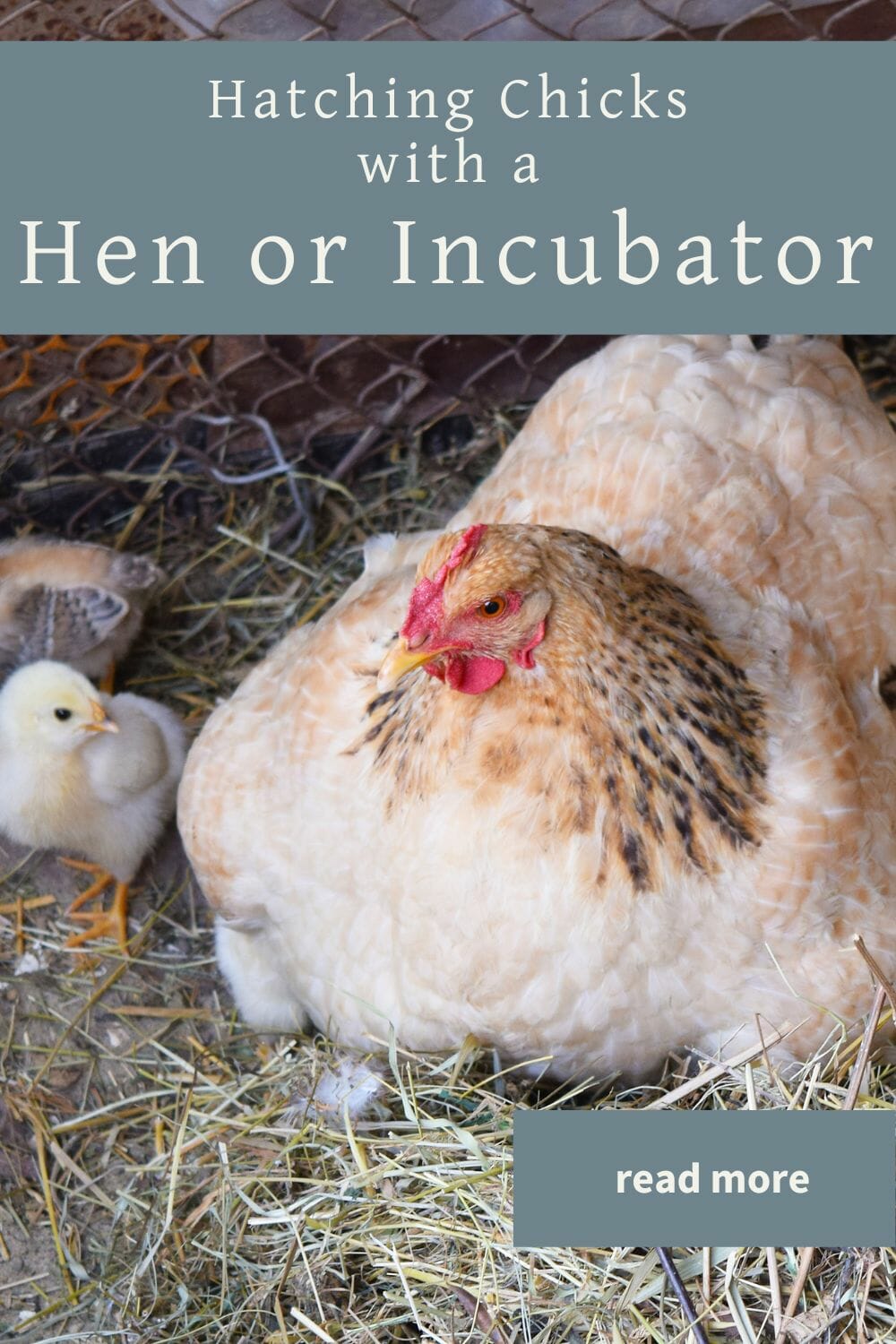Hatching Chicks with a Broody Hen or Incubator: Which is Better?
Hatching chicks using a broody hen versus an incubator. Explore the pros and cons and explore factors such as cost and convenience.

Are you ready to embark on the exciting and rewarding journey of hatching your chicks but torn between two equally intriguing methods? Perhaps you’re a seasoned chicken keeper, well-versed in the ways of poultry, or maybe you’re a beginner eager to delve into the world of raising chickens. But fear not, for you are not alone in this dilemma. Whether to rely on a broody hen’s natural instincts or harness the power of an incubator for incubating your precious fertile eggs can undoubtedly be confusing.
Both methods have unique advantages and charms, making it a matter of personal preference and circumstances. Are you drawn to the natural, nurturing instinct of a broody hen, or does the controlled precision of an incubator entice you?
Understanding the Role of a Broody Hen
To truly grasp the advantages of using a broody hen in hatching, it’s important to understand these maternal birds’ critical role. Broodiness is a natural instinct for many hens, triggered by hormonal changes that drive them to incubate their eggs and care for their offspring. When a hen becomes broody, she enters a state of near-obsession with her eggs, meticulously tending to them and keeping them warm until they hatch.
One of the key advantages of using a broody hen is that she provides a constant and reliable heat source. With her natural ability to regulate her body temperature, the broody hen ensures that the eggs are kept at an optimal warmth throughout the incubation period. This level of consistency is essential for proper embryo development and increases the chances of successful hatching.
A broody hen offers a layer of protection that an incubator simply cannot replicate. She becomes fiercely protective of her nest, warding off any potential predators or disturbances that may pose a threat to the unhatched chicks. This maternal instinct acts as a shield, ensuring the safety and security of the eggs and reducing the risk of any mishaps during the incubation process.
Using a broody hen also has emotional and psychological benefits for both the hen and the chicks. The brooding experience allows the hen to engage in her natural maternal instincts, leading to a sense of fulfillment and purpose. This can result in a more content and attentive mother who is dedicated to caring for her chicks after they hatch. The chicks, in turn, benefit from the emotional connection and guidance provided by their attentive mother hen, leading to a smoother transition into their new life outside the shell.
It’s important to note that not all hens possess the broody instinct or exhibit the same level of dedication to their eggs. Some breeds have been selectively bred over time to suppress broodiness in favor of increased egg production. Therefore, if you decide to go the broody hen route, it’s crucial to choose a breed known for its broodiness or identify a hen that has already demonstrated these nurturing traits.
The Advantages of Using a Broody Hen
Creating a natural, cost-effective environment for hatching chicks with a broody hen can save you time and money.
She Provides a Natural Environment
One of the biggest advantages of using a broody hen is the natural environment it offers to the developing chicks. A broody hen provides warmth, humidity, and protection, creating a hospitable and secure environment for the eggs. By relying on a hen’s instinctive behavior, you can ensure that the chicks have the best chance of thriving as they hatch in the same conditions they would experience in nature.
She Does the Work for You
A broody hen takes care of all the hard work for you. From diligently turning the eggs to maintaining the ideal temperature and humidity levels, a broody hen is fully equipped to handle every aspect of the incubation. This means less manual intervention and monitoring on your part, allowing you to focus on other tasks or simply enjoy observing the miracle of life unfolding before your eyes.
She Handles the Brooding
Another advantage of using a broody hen is the natural instinct she brings to the parenting process. Once the chicks hatch, the hen will actively protect and teach them important skills, such as foraging for food, the art of dust baths, and interacting with the flock. This natural guidance can help the chicks integrate seamlessly into their new environment and ensure a smoother transition into the rest of the flock as they grow. And that means you don’t have a brooder you need to clean regularly.
A Hen is Cheaper Than an Incubator
Using a broody hen can be a more cost-effective option. While an incubator requires an initial investment and ongoing electricity costs, a broody hen only requires simple accommodations and regular feed. This makes it an attractive choice for those on a budget or looking for a more sustainable approach to hatching chicks.
Exploring the Benefits of an Incubator
When hatching chicks with an incubator, gain control, capacity, flexibility, and safety. Discover the educational value and the wonders of nature it provides with this method of hatching.
The Control is in Your Hands
When it comes to hatching chicks, an incubator brings its own set of advantages. One key benefit is the level of control it provides. Unlike with a broody hen, where you rely on her instincts and behavior, an incubator allows you complete control over the eggs’ temperature, humidity, and turning. This precision can be particularly beneficial for those seeking a higher success rate in hatching chicks.
You Can Hatch More Eggs at Once
Another advantage of using an incubator is the ability to hatch a larger number of eggs at once. While a broody hen can only comfortably sit on a limited clutch of eggs, an incubator can accommodate multiple eggs at a time. This is especially important for those who are looking to hatch chicks in larger quantities or have a specific breeding program in mind.
You Can Hatch on Your Timeline
An incubator offers a greater level of flexibility in terms of timing. With a broody hen, you rely on her natural timetable and the duration of her broodiness. On the other hand, an incubator allows you to choose the exact time you want to start the egg-hatching process. This can be advantageous for those with specific plans or schedules that must be accommodated.
There’s Less Risk to the Eggs
Using an incubator eliminates the risk of potential hazards that can come with using a broody hen. While broody hens are generally reliable, there is always a chance of them abandoning the nest, getting attacked by predators, or experiencing health issues. Using an incubator can minimize these risks and ensure a more controlled and secure environment for the eggs.
Incubators Provide Learning Opportunities
Using an incubator provides a great learning opportunity, especially for children or those interested in the scientific aspect of hatching chicks. Observing the entire process from egg to chick can be a fascinating experience that offers insights into the wonders of nature and the miracle of life.

Considering the benefits, such as control, capacity, flexibility, safety, and educational value, it becomes evident why many people opt for this method of hatching chicks.
Considering Costs and Convenience
Now that we have examined the advantages of using an incubator for hatching chicks, it’s time to delve into another crucial aspect: the costs and convenience associated with both methods. This consideration plays a significant role in the decision-making process, as it determines the financial investment required and the level of effort and time commitment involved.
Financial Cost Comparison
When it comes to costs, using a broody hen has its advantages. You don’t need to spend a single penny purchasing an incubator or additional equipment. All you have to do is provide a safe and comfortable environment for the hen to sit on her eggs. However, it’s worth noting that some indirect costs may be associated with ensuring the hen is healthy and well-fed throughout the hatching period.
On the other hand, opting for an incubator requires a financial investment upfront unless you make your own for cheaper. They come in a wide range of prices, depending on their features and capabilities. From basic models to more advanced options, the cost can vary significantly. Additionally, you may need to consider additional expenses such as electricity usage and maintenance costs. It’s important to weigh these costs against the benefits an incubator provides in terms of control, flexibility, and safety.
Convenience is Key
Using a broody hen can be quite convenient because she takes care of all the necessary tasks. The hen does everything from diligently sitting on the eggs to turning them and maintaining the optimal temperature and humidity. This hands-off approach can especially appeal to those with limited time or who prefer a more natural method of hatching chicks.
It’s important to consider that relying on a broody hen means having to wait for her to go broody, which can take time. Furthermore, not all hens are equally reliable or successful at hatching chicks. There is a risk that the process may fail if the hen loses interest, gets disturbed, or doesn’t possess the necessary maternal instincts. These uncertainties can cause delays and disappointments.
Using an incubator offers a certain level of convenience and predictability. You have control over the entire hatching process, from selecting the eggs to adjusting the temperature and humidity levels. This means you can start the process whenever you’re ready, without having to wait for a hen to go broody. Additionally, you have the assurance that the incubator will maintain the ideal conditions required for successful hatching.
Comparing Success Rates
Success rates are an important factor to consider when it comes to hatching chicks. After all, the ultimate goal is to have healthy and thriving chicks. Both using a broody hen and an incubator offer their own advantages and potential drawbacks regarding success rates.
Using a broody hen has been the traditional method for hatching chicks for centuries. With a broody hen, you can rely on nature to take its course. The hen instinctively knows how to care for the eggs, providing them with the necessary warmth and protection. This natural approach can often lead to high success rates, as the hen’s maternal instincts ensure optimal conditions for hatching.
There are some uncertainties when using a broody hen. Not all hens successfully go broody; even if they do, they may abandon the eggs before hatching or fail to provide adequate care. Factors such as weather conditions or disturbances in the coop can also affect a hen’s ability to hatch chicks successfully. These uncertainties can impact the success rates and introduce a level of unpredictability to the process.
Using an incubator offers a certain level of convenience and predictability. You have control over the entire hatching process, from selecting the eggs to adjusting the temperature and humidity levels. This means you can start the process whenever you’re ready, without having to wait for a hen to go broody. Additionally, you have the assurance that it will maintain the ideal conditions required for successful hatching.
Incubators are designed to create an optimal environment, providing a consistent temperature and humidity level throughout the entire process. This controlled environment can lead to higher success rates compared to relying on a broody hen. They also allow you to closely monitor the eggs’ development, ensuring that any potential issues are addressed promptly.
When considering costs and convenience, both methods have their pros and cons. Using a broody hen may be more cost-effective and offer a hands-off approach, but it also comes with uncertainties and potential delays. On the other hand, while an incubator requires an upfront investment, it provides control, flexibility, and predictability throughout the hatching process.
Jessica’s Tip: We mix Sweet PDZ and play sand in our trays. I clean them out with a kitty litter scoop every three days and do a full cleanout of them twice a month.
FAQs on Hatching Chicks With a Broody Hen
If you’ve found value in this blog post and enjoyed reading it, why not share it with your Pinterest community? Pin the image below and spread the love!

The decision between hatching chicks with a broody hen or an incubator is not a clear-cut one. Both methods have their advantages and drawbacks, making it a matter of personal preference and circumstance. While a broody hen offers the natural and nurturing aspect of hatching, an incubator provides control and convenience. Consider factors such as cost, success rates, and the well-being of the chicks before making your choice.
What’s your preferred method for hatching chicks, and why? Are you a fan of the natural instincts of a broody hen, or do you find the precision and control of an incubator more appealing? Share your insights and experiences!

Nothing useful to add, but this article reminded me of an incident with our chickens when I was a kid.
We had two quackless, flightless ducks the were someone’s Easter gift that was re-gifted to us because they didn’t realize how much care ducks take. *eyeroll* Both were female and one was extraordinarily broody. When she’d disappear for a couple of weeks, we had to track her down and take her rotting eggs away…she’d set on them and starve herself. It wasn’t a good situation.
We don’t know where she found the hen’s nest, but she finally had success. We learned about it one sunny morning when we found her in the pond in our back yard, scolding her adopted children for not following her into the water!
That is so sweet that she reached her goal of being a mommy (and I’m with you on the Easter thing).
I’ve only used a broody hen, so far, though my husband pushes for getting an incubator. In our 2-1/2 years of chicken-keeping, we’ve had 4 batches of chicks brought into the world. One lady sneaked off into the grass. She was a great mom, but had always been skittish of humans and taught her babies the same. One mama kept getting bullied out of her nest box before we learned to isolate her. We finally separated her with some eggs from our new guinea hens and she hatched them out like a champ! She even hangs out with all the other guineas, now! First prize, though, goes to Buffy-Mama (buff orpington). Last summer, she found a great spot (somewhere!) and hatched out TWO BATCHES of chicks! Three early in the spring, and TWELVE a couple months later! (So much for smaller hatch quantities, eh?!) She’s a great mom and we’re hoping for more from her this spring!
It is so much fun watching hens be good mamas. Wishing you the best for another productive season.
Those are excellent questions and I’m so glad you asked. I can only share my own experience here, but I hope it will be of help. I’ve used two broodies in my chicken keeping years. One is an excellent brooder and mother. The other is “meh”. I have brooded many a chick under both and removed chicks from the flock at various ages and stages. The excellent broody with often look for the chicks after they have been removed. I’ve found she searches longer the young that they are. When they are only a few days old, she will look for them for a few days. Not constantly, but you’ll see her lift her head and do what I call the “mother call” from time to time. When they are a month or so old, it seems after an hour or so she’s forgotten about them. My “meh” broody doesn’t seem phased either way and she’s notorious for ditching her chicks when they are only a day or two old. Both mothers will defend their chicks fiercely against you. When and if you decide to sell them, separate the hen before trying to handle the chicks. I will typically herd mama into a crate or pick her up and relocate her (quickly lol).
Thanks, Jessica! I appreciate your time and advice. I will keep this all in mind if/when we decide to sell them.
Hi! I found your blog via a google search about broody hens. My situation is a little different, and I’d like your opinion, if you don’t mind. We’ve had quite a bit of unintentional brooding going on and I’m wondering if we can sell some of the chicks shortly after they hatch? Will the hen still want to “mother” someone for a period of time after they hatch? Will she act broody again if I take the new chicks away? We are coming up on winter here in Minnesota and we don’t have the coop space for too many more chicks. Thanks for your help!